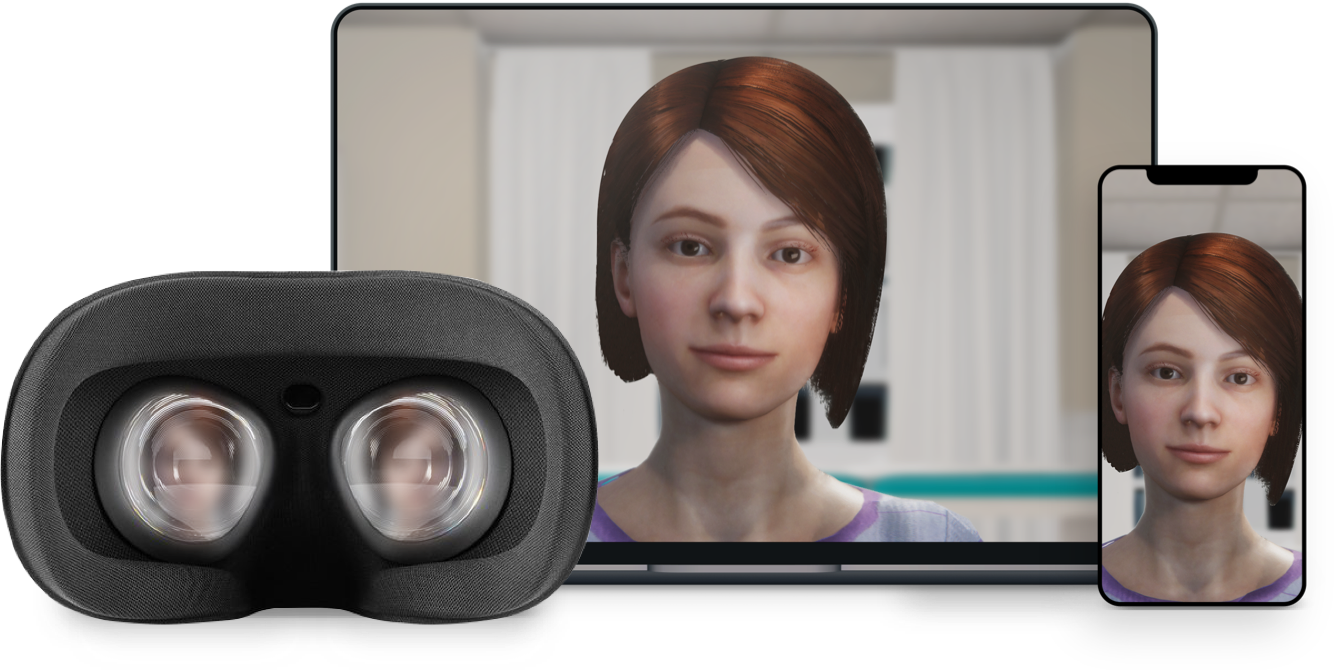Virtual Patients are experiencing a second renaissance. Conceptualized in the 1970s the virtual patient as a ‘human-replicant’ was closer to science fiction than reality, but what became attainable in the 90s and early 2000s was clickable multimedia experiences with various levels of interactivity (think the menu-driven, static screen patient). Not quite the ‘digital human’ that was envisioned, nevertheless, a step closer. But then Virtual Patient’s use waned.
Last year, however, an article published by the Journal of Medical Internet Research showed that the number of studies including the term virtual patient has more than doubled on the MEDLINE database since 2009. So, why are we seeing this resurgence of Virtual Patients in 2020?
1, Healthcare education has more clearly defined and categorized Virtual Patients.
“Virtual Patient” (VP) is now recognized as an umbrella term, encompassing several types of digital patients on a variety of technology platforms that are used to address different competencies. Kononowicz, Zary, Edelbring, et.al.’s article Virtual patients – What are we talking about? A framework to classify the meanings of the term in healthcare education, provides us an overview of these various platforms and competencies. Thus we’ve moved beyond “the law of the instrument” – if the only tool you have is a hammer, everything looks like a nail – and can better assign the appropriate virtual patient per the learning objective. Not all Virtual Patients are created equal, nor should they be.
Today, under the VP umbrella, there is a section of canopy for VPs that use natural language processing and artificial intelligence to address patient communication and clinical interviewing.
2, Advancements in technology and natural language processing have allowed us to address some limitations of early Virtual Patients.
VPs of yesteryears were designed in collaboration with instructional designers and faculty, but their “realism” was greatly limited by the then-current state of technology, i.e. static images of the patient, point-and-click interactions, and with no possibility of naturally asking questions. Today, we can do better as evident by several substantial technical improvements of VPs, thus paving the way to a “second coming”.
First, enhanced graphics and audio. Better digital rendering, fluid animation and smoother voice synthesis all contribute to a more realistic experience. As the visuals evolve, the engine behind the Virtual Patient must also evolve into a more engrossing interaction.
Secondly, the birth of modern natural language processing (NLP). Through developments paved by Watson (IBM), Alexa (Amazon), Siri (Apple), Cortana (Microsoft), and Google Assistant, natural language processing has given VPs a major leap forward towards the ‘human replicant’ vision by making possible the ability to verbally question the VP who in-turn provides a response guided by AI. With these advancements, Virtual Patient platforms can stand on the shoulders of giants and solve obstacles frequently presented in previous research studies that the technology just ‘wasn’t there yet’.
3. These next-level Virtual Patients can feel more real than ever before, and you can build them.
Within these natural language processing and artificially intelligent VPs, the end user has the power of authorship over patient cases, building personas and synthesizing responses, without a degree in computer engineering. This customization of the VP by the health educator and simulationist can take Virtual Patients to the next level. Clinicians and educators are, really, the only ones who can create realistic interactions with authentic patient responses, and predict the communication branching that occurs during a clinical conversation.
4. Covid-19 has forced everything to be contactless, and education is no exception. Out of necessity: invention, or in the case of the Virtual Patient: innovation. With institutions moving rapidly toward hybrid learning and pivoting away from face-to-face where and when possible, the popularity and widespread use of Virtual Patients has exponentially increased.
This acceleration has two major benefits for the simulation community and Virtual Patient technology. First, functioning as a catalyst for multi-modal simulation (plug: my colleague will host a learning lab on this topic October 28, 2020). Secondly, pushing the Virtual Patient through an accelerated wormhole of development. More end users and adoption often means faster advancement in a shorter period of time.
If you want to learn more about designing artificially intelligent virtual patients on the PCS platform, sign up for the upcoming SSH Learning Lab presentation on October 14th. Disclaimer: the author of this article is the co-founder of PCS. Can’t make it? Contact us, or schedule your own private demonstration.

